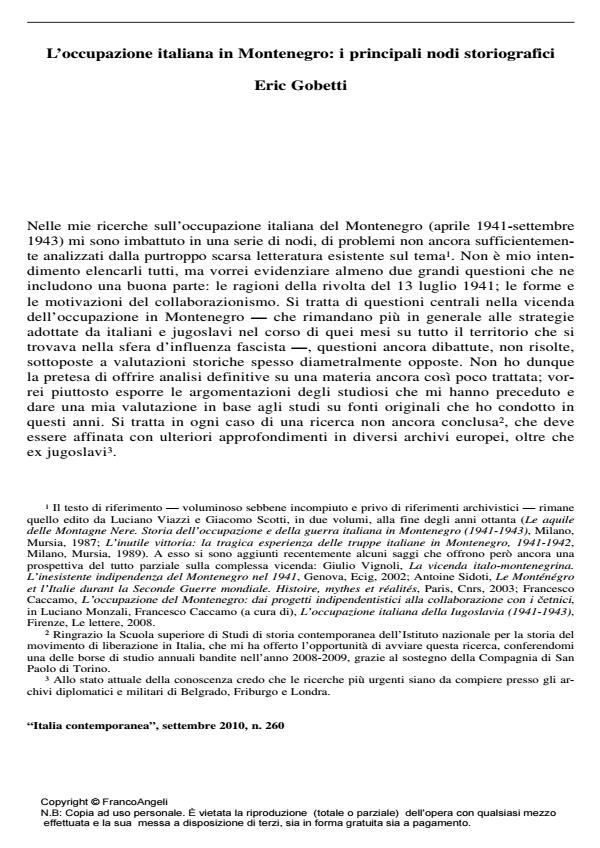Italian occupation in Montenegro: the main historiographic questions
Journal title ITALIA CONTEMPORANEA
Author/s Eric Gobetti
Publishing Year 2011 Issue 2010/260
Language Italian Pages 19 P. 475-493 File size 327 KB
DOI 10.3280/IC2010-260007
DOI is like a bar code for intellectual property: to have more infomation
click here
Below, you can see the article first page
If you want to buy this article in PDF format, you can do it, following the instructions to buy download credits

FrancoAngeli is member of Publishers International Linking Association, Inc (PILA), a not-for-profit association which run the CrossRef service enabling links to and from online scholarly content.
This essay deals with some of the main historiographic questions concerning an event as yet insufficiently studied: the Italian occupation in Montenegro during the Second World War. In the first part the A. tries to point out the reasons and aims of the mass uprising of July 13th 1941, taking into consideration both the errors of Fascist diplomacy, in the effort to create a puppet independent State, and the specific political and social situation of the region in that period. The second part of the study focuses on the ambiguous character of the collaboration between the Italian army and the Chetnik movement. The crucial point turns out to have been the contradiction between their military alliance against the communists on the field and the imperatives of the international arena, where Fascist Italy and the Chetniks (as armed forces of the Yu- goslav government-in-exile) were ranged on opposite fronts. Yet the A. stresses the community of interests, not just contingent, between the Chetnik leader, Draza Mihailović, and the Italian Governor of Montenegro, gen. Alessandro Pirzio Biroli.
Keywords: Second World War, Montenegro, Chetniks, Italian Occupation, Montenegrin popular uprising, collaborationism
Eric Gobetti, L’occupazione italiana in Montenegro: i principali nodi storiografici in "ITALIA CONTEMPORANEA" 260/2010, pp 475-493, DOI: 10.3280/IC2010-260007